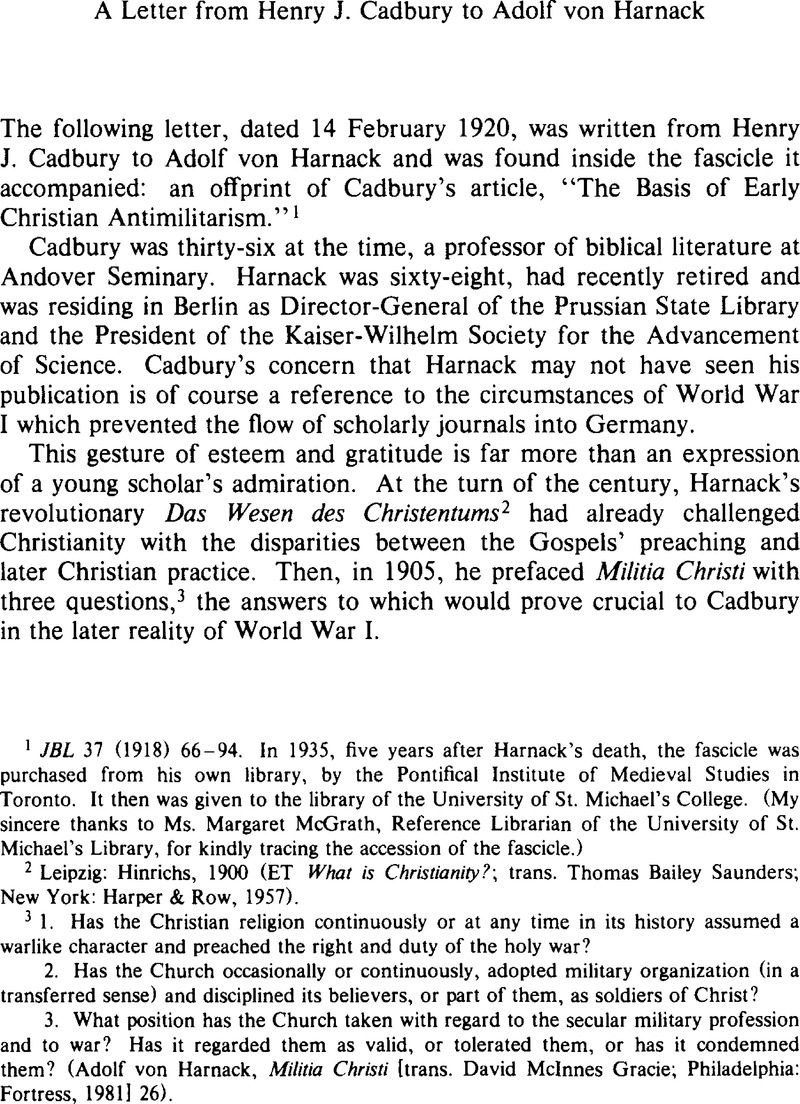No CrossRef data available.
Published online by Cambridge University Press: 10 June 2011

1 JBL 37 (1918) 66–94. In 1935, five years after Harnack's death, the fascicle was purchased from his own library, by the Pontifical Institute of Medieval Studies in Toronto. It then was given to the library of the University of St. Michael's College. (My sincere thanks to Ms. Margaret McGrath, Reference Librarian of the University of St. Michael's Library, for kindly tracing the accession of the fascicle.)
2 Leipzig: Hinrichs, , 1900 (ET What is Christianity?; trans. Saunders, Thomas Bailey; New York: Harper & Row, 1957).Google Scholar
3 1. Has the Christian religion continuously or at any time in its history assumed a warlike character and preached the right and duty of the holy war?
2 . Has the Church occasionally or continuously, adopted military organization (in a transferred sense) and disciplined its believers, or part of them, as soldiers of Christ?
3 . What position has the Church taken with regard to the secular military profession and to war? Has it regarded them as valid, or tolerated them, or has it condemned them? (Harnack, Adolf von, Militia Christi [trans. Gracie, David Mclnnes; Philadelphia: Fortress, 1981] 26).Google Scholar
4 In 1947, Henry J. Cadbury, chairman of the AFSC, received the Nobel Peace Prize on behalf of both the British and American Friends.
5 Cadbury, “Early Christian Antimilitarism,” 67.
6 Ibid., 67.
7 Ibid., 71.
8 Ibid., 93–94.
9 Later that same year, in November of 1920, Harnack's meditation would show the need for gestures of peace.
Around us and amongst us there has been much sorrow and loss; unrighteousness is gaining the upper hand; the love of many is growing cold, and is increasingly confined with narrower limits. Then, natural feelings tend to gain the upper hand, and they menace us with yet further impoverishment. Therefore, let this Advent text (1 Cor 4:6) remind us of the eternal light, of the glory of God, our Father in the face of Jesus Christ. And do not let us be content to regard it as a luminous mist, but let it be to us like the sun when it breaks through mists and clouds scattering them, and the sky is clear and bright (Harnack, Adolf von, A Scholar's Testament [trans. Wyon, Olive; London: Nicholson and Watson, 1933] 217–18).Google Scholar